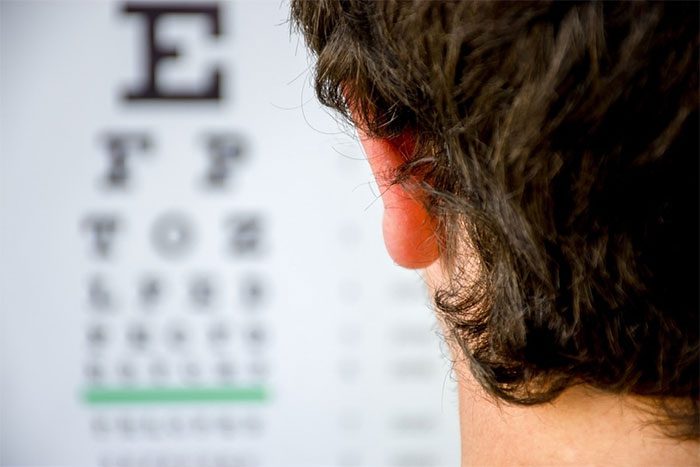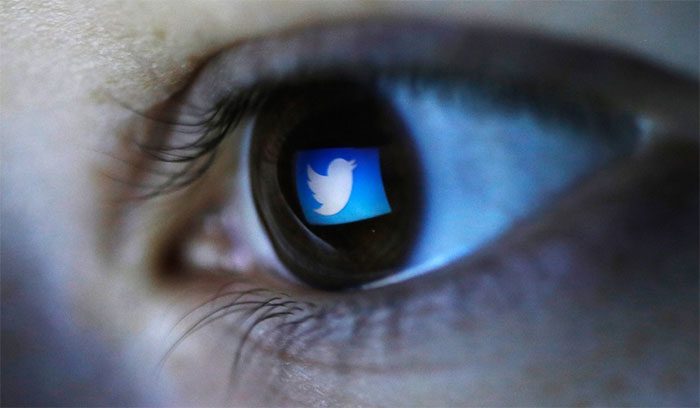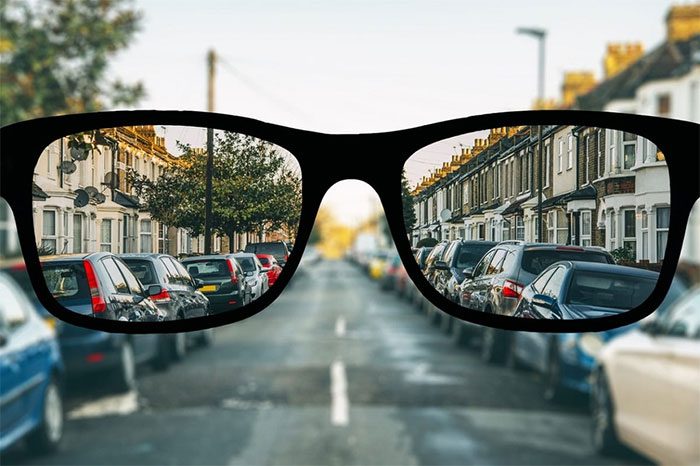The Role of Screens in the Rising Global Myopia Rates.
Scientists at the National Eye Institute (NIH) predict that by 2050, nearly half of the world’s population will be myopic.
In addition to genetic factors, the increasing prevalence of myopia can be attributed to more confined living environments, with human eyes constantly adapting to new tasks such as reading and looking at phone screens, according to Dr. Viola Kanevsky, former President of the New York State Optometric Association. As a result, the number of myopic individuals is expected to continue rising.
Meanwhile, people with hyperopia do not face these issues. With the ability to see better at distances, scientists believe that the prevalence of hyperopia used to be much higher than the current 5-10% of the population.

Genetics can influence whether a person is myopic or hyperopic. (Image: Kraff Eye Institute).
Advantages of Myopia
In reality, genetics can impact whether a person is myopic or hyperopic. If one or both parents are myopic, their child has about a 30% higher risk of developing myopia. Structurally, myopic and hyperopic eyes exhibit some differences. Myopic eyes tend to appear “longer” than normal eyes, while hyperopic eyes are “shorter.”
According to Dr. Kanevsky, most children are born with mild hyperopia, but their eyes gradually elongate to reach a standard shape. They will adjust their vision to see closer and reduce eye strain or squinting.

Myopic eyes are usually longer while hyperopic eyes are shorter. (Image: Reuters).
Adults with myopia typically have eyes that continue to grow longer than the standard. While they cannot change their myopia, there are ways to prevent their condition from worsening, experts advise.
In the early stages of life, being myopic can provide individuals with advantages as they adapt better to various environments. This advantage is maintained if their myopia is below 3 diopters. However, they also face a higher risk of developing eye diseases such as glaucoma and retinal detachment compared to the general population.
The 20-20-20 Rule for Myopic Eyes
To manage myopia in children, parents can consider using Ortho-K contact lenses. These are hard contact lenses designed for overnight wear to reshape the cornea, restoring vision without the need for glasses. Additionally, they may use medication as directed by a physician.
These methods are about 50% effective for children with myopia. Adult eyes typically change by 0.5 diopters annually, for example, progressing from -2.00 to -2.50 diopters within a year. “If these methods are used, parents can slow the progression to just 0.25 diopters per year,” Dr. Kanevsky added.

The 20-20-20 rule helps regulate myopic eyes. (Image: iStock).
However, experts say that the most effective solution for treating myopia is to spend more time outdoors. According to research from the International Myopia Institute (IMI), children who spend 80-120 minutes outdoors each day will significantly reduce their risk of worsening myopia.
You can apply the 20-20-20 rule to alleviate eye strain and help prevent the onset of eye diseases. Specifically, after every 20 minutes of continuous screen time, take a break by looking at an object at least 20 feet (approximately 6 meters) away for 20 seconds.
The Eye Must Learn to Adapt
By middle age, individuals start to struggle with seeing objects up close. Unlike typical hyperopia, the cause of reduced vision in older adults is aging, which cannot be prevented. Inside the human eye is the transparent lens, which helps focus light rays to create clear images, allowing us to adjust our focus for distance, similar to zooming with a camera lens.
“By age 40, the lens develops layers like an onion, beginning to harden and form additional layers. Even those with good vision start needing glasses for reading and push objects away to see them better,” the former President of the New York State Optometric Association stated.
Those with hyperopia may experience presbyopia earlier than usual because their eyes are accustomed to focusing on distant objects rather than seeing nearby ones clearly. Myopic individuals will face this condition later.
According to Dr. Viola Kanevsky, in just a few decades, our eyes will continue to adapt to the new environment, enabling older adults to read or look at computer screens just like younger individuals. “Regardless of how the future develops, human eyes will continue to adapt to the world they live in,” the expert shared.


















































